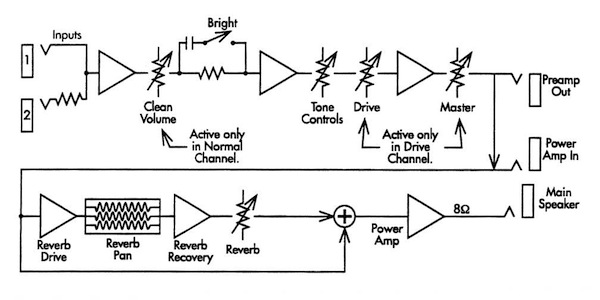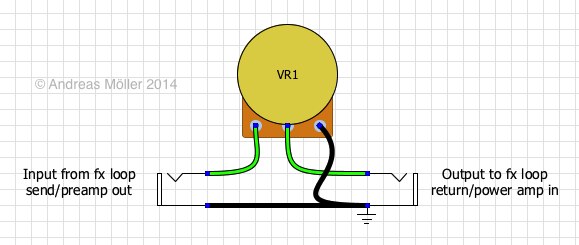You may or may not have seen them, but on eBay there are always a few boxes for sale that claim to give you the full experience of your tube amp, but at bedroom level. The word ”attenuator” is also thrown in there, which makes these boxes turn up when you use that as a search term. And alongside the THD Hot Plate, Weber MASS and other (relatively costly) attenuators that turn up in the search results, the ”volume box attenuator” seems deceptively cheap. But what is it, and does it work?
Terminology
The word ”attenuator” means something that reduces the amplitude of an electronic signal. For audio applications, there are two main types:
- Line attenuator
- Power attenuator
The power attenuator is the one most guitarists tend to associate with the word ”attenuator” – it goes between the power amp and the speaker, and lets you run the amp on 10 while keeping the physical volume down. This is sometimes called a ”power soak” (since it ”soaks” up some of the power). The ”line attenuator” sits after the preamp section in the amp and limits the signal level reaching the power amplifier. The amp’s master volume control is an example of a line attenuator, thus.
Do not confuse the two types – if you buy the cheap ”volume box” version and connect it between the amp and speaker, you will fry both the box and your amp!
What is it?
…and by ”it” I mean the volume box (line attenuator). The power attenuator (Hot Plate, MASS etc) may be a more interesting device, but you can read up on those elsewhere 🙂 The volume box that you can buy for $10 on eBay is just that – a box with two jacks and a volume pot. That’s it. And it does indeed let you adjust the overall volume of the amp, by limiting the signal level returned to the amp’s effects return/power amp in jack. This assumes the effects loop is the series type – it will not work on parallel loops (since those only add the effected signal to the dry signal present in the amp).
But does it work??
As in ”will it let me drive the amp harder at bedroom level”? Yes and no. It will not let you drive the power amp any harder – you’re only adding a master volume to the amp (and if yours already has a master, this will be a second one in line with the first). The only way to make the power tubes work harder is to actually let them do that, by running the amp at high volume. If you then want to reduce the (physical) volume, for instance to avoid being evicted from your house or kicked off the stage, you need an attenuator. Um, a ”power attenuator”, I mean 🙂
But it may let other parts of the amp work harder, so you may still notice a difference. For instance, on the clean channel (or the only channel, if yours is a non-master single channel amp), the level control is often located after the initial tube stage, but before a few other tube stages in the preamp. In those cases, it will let you crank the preamp tubes up – just like if you had a master volume available for the clean channel too. To make things more visual, let’s look at the block diagram from a Fender Blues/Hot Rod Deluxe.

The volume box goes in the effects loop (between ”preamp out” and ”power amp in”). So if you turn the clean volume up, you will drive the following preamp tube and the tone stack harder. That can give you a nice gritty clean/semi dirty tone, which can then be kept under control with the volume box. It will also make the clean volume control less twitchy (it is well known that the clean channel on the Blues/Hot Rod amps very quickly jumps from ”barely heard” to ”very loud”). So in this sense it actually works, to a degree.
But I have also seen videos on YouTube where people have gotten more distortion from the ”drive” channel by cranking the master volume to max and using the volume box to control the level. If you look at the block diagram, that shouldn’t work (since there isn’t anything after the drive channel master that could distort). But a look at the amp’s schematic revealed that there is actually a buffer stage right before the ”preamp out” jack. It’s an op-amp buffer (half a TL072, to be precise) which sets the output impedance of the preamp out. That’s where the additional distortion is coming from. So on the drive channel, the ”full tube sound” the volume box is said to give you is actually an op-amp buffer stage that is distorting 🙂
Conclusion
Should you buy one, then? Well, why not? If it helps you get the tone you like, and as long as you know what you’re buying – that it isn’t anything magic, and that it won’t let you run the power amp any hotter than you’d normally do – have at it. And at the prices they usually go for on eBay, it’s hardly worth building your own – the parts alone (when bought in singles) can easily cost as much.
But if you want to build your own, all you need is a box, two jacks and a potentiometer. I’d probably use a 25K audio/log pot, but I’ve seen 100K pots used too. Here’s the wiring diagram:
